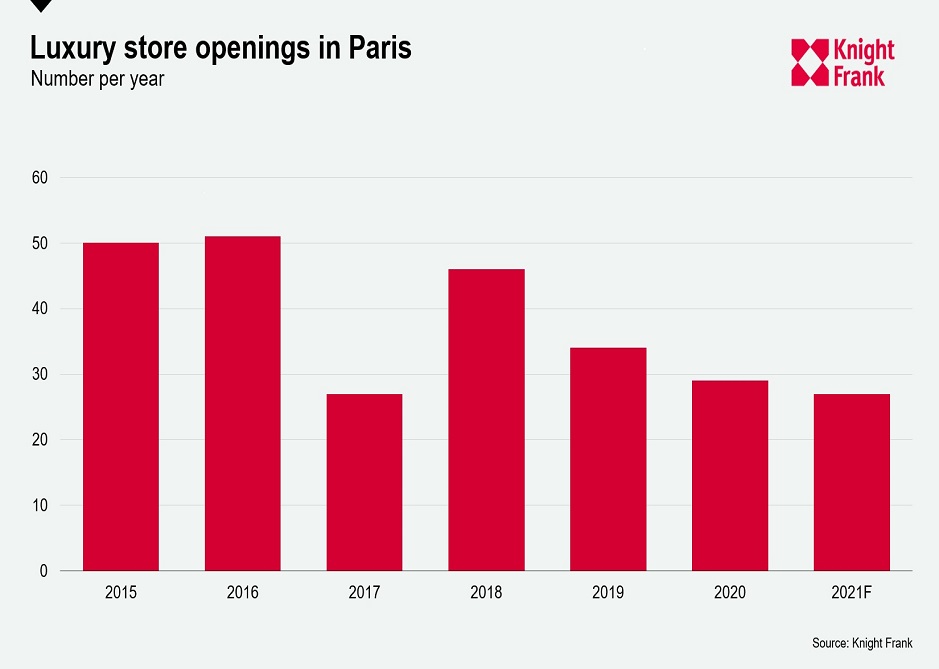What is the outlook for the Paris retail market?
Despite the pandemic, a few recent significant openings and the relatively large number of ongoing projects indicate that French and international retailers are still confident about the appeal of the Parisian market.
3 minutes to read
Marked by the extension of the curfew from 6:00 p.m. to 6:00 a.m. throughout the country, and the partial lockdown announced in certain regions, the first weeks of 2021 have been difficult for the French retail market. However, there are signs of hope, starting with the launch of a vaccination campaign that will eventually loosen the stranglehold of restrictive measures and restore household confidence, encouraging them to use the savings accumulated since the beginning of the health crisis. The outlook is therefore not necessarily bleak, especially as both lockdown periods were followed by a significant return to stores, highlighting the propensity of the French to consume and their attachment to physical commerce. Finally, while many retailers have stopped or slowed down their expansion, others have continued to grow, demonstrating their ability to project themselves into the post-Covid future.
Of course, not all product categories, retail formats and locations have the same advantages in the face of the epidemic. In Paris, the lack of foreign tourists represents a particularly significant loss of revenue for the luxury sector, which will still have to do without a good part of this lucrative income in 2021 and probably 2022. Despite this, the decline in the number of luxury boutique openings was relatively moderate in 2020 (29 compared to 34 in 2019) thanks to the completion of projects initiated well before the epidemic, including some major openings such as Dior on rue Saint-Honoré. The 30 or so projects underway also indicate that luxury groups are relatively confident about the long-term appeal of Paris, even though they are prioritising the improvement of existing stores and tend to refocus on the best locations. In addition to Rue Saint-Honoré, a number of major projects are expected in the Golden Triangle and Rue du Faubourg Saint-Honoré, which is benefiting from its status as a historic luxury thoroughfare and more advantageous leasing costs for retailers thanks to the downward pressure on rental values.

Parisian streets frequented by a wealthy local clientele, such as the Rue de Passy and a number of areas prized for their high-end food shops and caterers (Poncelet, Lévis, Cler, etc.), are also doing well. On the other hand, the next few months will still be difficult for the tourist and office districts, and for streets with a large proportion of mass-market clothing stores. For example, the vacancy rate exceeds 10% on rue de Rennes and boulevard Saint-Michel, and it will be interesting to see how the correction of rental values can contribute to the revival of activity. Generally more favourable to tenants on most prime thoroughfares, negotiation conditions could enable the Paris market to remain attractive and facilitate the establishment of major international retailers. A number of significant arrivals have already been confirmed, reflecting the undeniable influence of the French capital: in addition to IKEA, which will open its first concept dedicated to home decoration in the world at 144 rue de Rivoli in June, Kith and Restoration Hardware, two of the most cutting-edge concepts of the moment in terms of retail experience, have chosen Paris as the location for their own first European openings.
